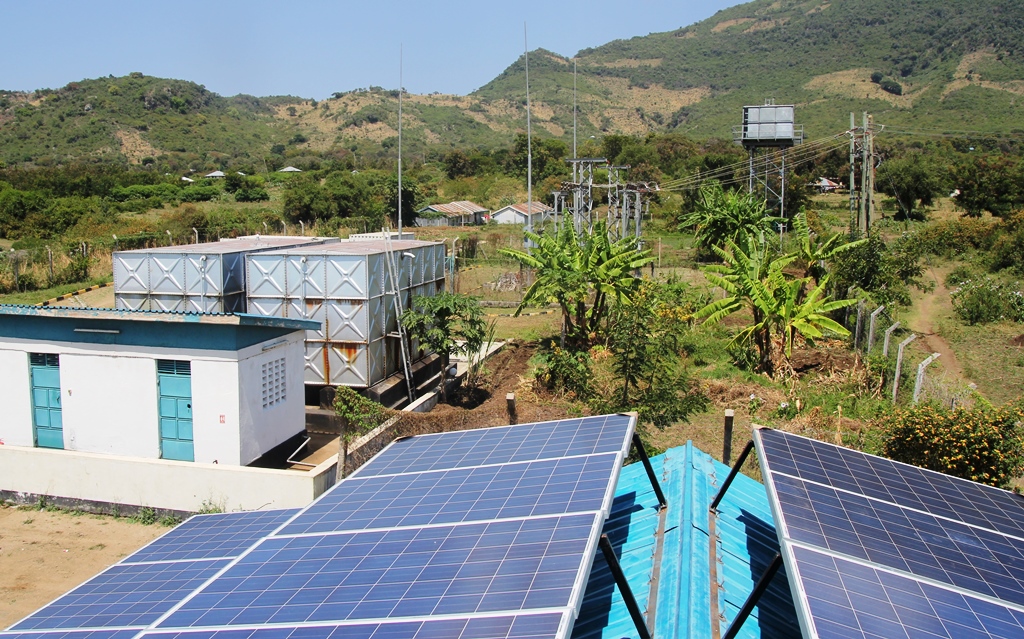Research & Markets suggest global microgrid markets will have a compound annual growth rate (CAGR) of 12% between 2016-2022. The Research and Markets timeline for microgrid growth is slightly slower than Global Microgrid Market report from Transparency Market Research, which has the global microgrid market reaching $35 billion by 2025 with a staggering 20.7% CAGR.
Research & Markets site many factors for driving the microgrid market including:
- Falling costs for renewable energy: Solar energy continues to fall, which is helping to scale it to new heights. According to an August 2016 Scientific American article, solar prices will continue to fall for both residential and utility markets. Solar energy has become cheaper than fossil fuels in many places.
- The Rise of Energy Storage: Storage is becoming an important piece in the clean energy riddle. Critics often have cited intermittency concerns over wind and solar energy. One key solution to solving this problem, which is to harness both wind and solar energy when not used in peak hours, store it and use in non-peak hours with battery storage. With falling lithium battery costs, plus factories scaling up production (thanks, Tesla Gigafactory), battery storage units are becoming more affordable. This is helping microgrids increase their potential, as many have sprouted up all over the world, ranging from Canada to developing nations.
- Military Going Green: The Pentagon is taking climate change seriously and has been one of the biggest boosters of supporting clean technology development. The US Army has invested in microgrids across US bases to supply energy and reduce security risks from convoy travel in conflict zones. As climate change increases further risks, expect further microgrid deployment as a strategy to power the US military.
- Climate Change affecting grid production: Unless there are upgrades to grid infrastructure, A 2015 Climate Central article suggested climate change could hamper US western utilities ability to create power. Close to half of the US western power plants could see a 3% decline in electricity production on a standard summer day, plus a 9% drop during a decade-long drought, Climate Central This only increases the role microgrids will play in future years, as utilities look to have power backup should power pants declining electricity production due to a warming world.
Besides these four major factors, Research & Markets also mentioned other various factors why microgrid markets will grow:
The Increase of Carbon Emissions: Carbon emissions continue to rise as they are now consistently over 400 parts per million (ppm), reaching 404.48 ppm in December, 2016. This level will never go below 400 ppm, according to analysts. Carbon emissions are one of the primary reasons for human-made climate change, which impacts the global economy and geopolitical situation. Failure to mitigate climate change was the top global risk, from the World Economic Forum.
Extreme weather events: As temperatures increase from climate change, so too will extreme weather phenomena. As extreme weather events ramp up, so does the energy security risks. We see more of these type of events. These range from droughts to torrential rain storms (often referred to as “rain bombs.”). Microgrids hedge bets against energy security risks, should the power go out. ComEd in Illinois has been a leader in supporting microgrids at the utility level. They have developed many projects for both economic development, but also reduce energy security risks.
Currently, In North America, remote and military systems are the two top sections for expanding microgrids, according to the report. Research & Markets suggests US government plans for supporting energy efficient power ideas will fuel North American growth.
However, the recently elected Trump Administration may have a long-term adverse effect on the clean energy industry, including a possible overall of the US tax system, which may impact certain renewable energy industries, per Bloomberg. Long term growth challenges for North American microgrid markets may occur, should the Trump Administration cuts cleantech investment dramatically, or makes tax policy less friendly.
Meanwhile, a growing appetite for energy thanks to an increasing population within the region will fuel Asian Pacific microgrid markets. Advancement of microgrids in Europe is expected even in its early stages, Research & Markets said.
The future for microgrids continues to look bright. This report from Research & Markets only proves there is lots of upside for the need for microgrids heading forward.
Lead Image Credit: Solar Panel by The US Department of the Navy via WikiCommons. Under Public Domain via Creative Commons





